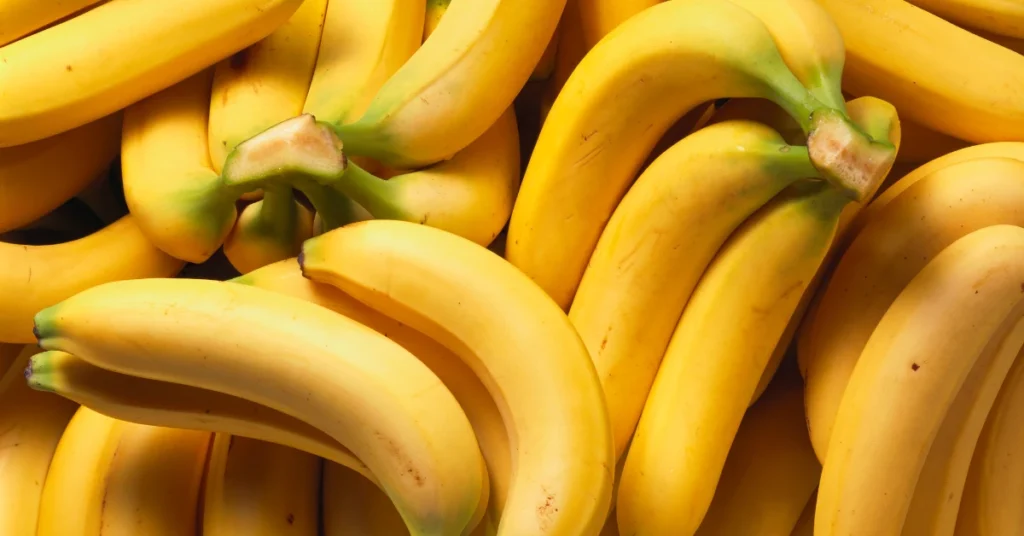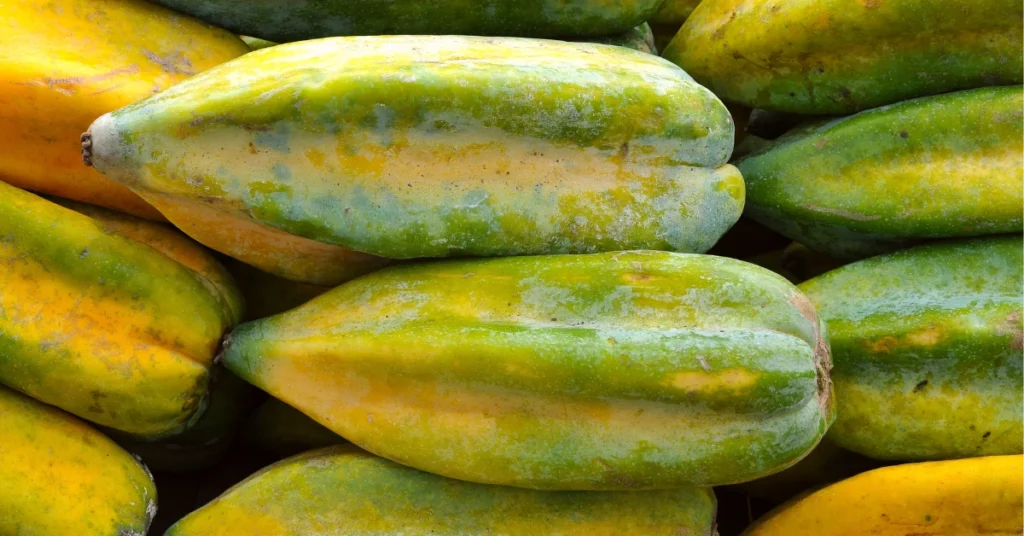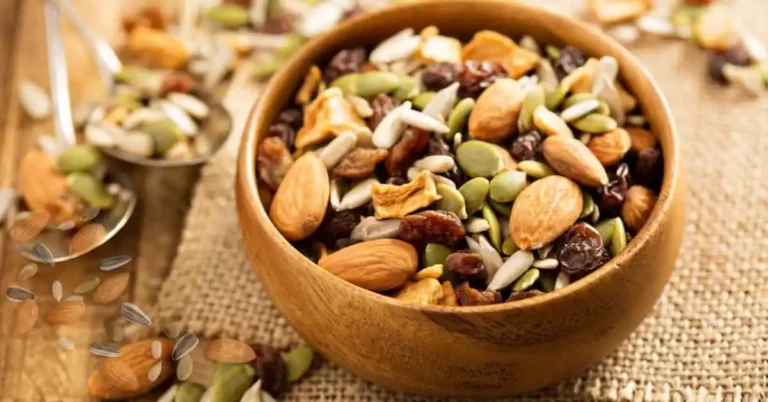Fruits That Start With B
Fruits are an essential part of a healthy and balanced diet. They come in a wide variety of shapes, sizes, and colors. From sweet and juicy to tart and tangy, each fruit has its own unique taste and nutritional value. While we are all familiar with fruits like apples, bananas, and cherries, many lesser-known fruits deserve our attention. This article will explore the wonderful world of fruits that start with B and discover their health benefits and uses.
20 Fruits That Start With B:
Here’s a list of fruits that start with B.
1. Banana
Let’s start with a fruit that needs no introduction – banana. This elongated yellow fruit is one of the most consumed fruits in the world. Bananas are known for their high potassium content, which helps regulate blood pressure and improves heart health. They are also a good source of vitamin C, vitamin B6, and fiber. Bananas are commonly eaten raw but can be used in smoothies, baked goods, and savory dishes like banana chips.

2. Blueberry
Blueberries are small, round, dark blue fruits packed with antioxidants. They are known for their unique sweet and tart flavor and are commonly used in desserts, smoothies, and jams. Blueberries are also low in calories and fiber, making them popular for weight loss and improving digestion.

3. Blackberry
Blackberries are similar to blueberries, but they are larger and have a dark purple color. Like blueberries, they are also rich in antioxidants and have anti-inflammatory properties. Blackberries are commonly used in desserts, smoothies, and as a topping for oatmeal or yogurt. They are also great for making homemade jam.

4. Boysenberry
The boysenberry is a cross between a raspberry, blackberry, and loganberry. It has a deep purple color and a sweet and juicy flavor. Boysenberries contain high vitamin C and manganese levels, which help boost the immune system and promote healthy bones. They are commonly used in jams, desserts, and sauces.

5. Bilberry
Bilberries are small, dark blue fruits that are similar to blueberries. They are known for their high antioxidant and anti-inflammatory properties and are often used in traditional medicine to improve vision and relieve eye fatigue. Bilberries can be eaten raw or used in jams, juices, and pastries.

6. Bael fruit
Bael fruit, also known as wood apple, is a fruit native to India. It has a hard, woody outer layer and a soft, sticky pulp inside. Bael fruit is an excellent source of fiber and contains vitamins A, B, and C. It is commonly used in Indian cuisine to make sherbet, chutney, and pickles.

7. Barbados cherry
Barbados cherry, or Acerola, is a small red fruit native to South and Central America. It is known for its high vitamin C content, even higher than in oranges. Barbados cherries are commonly used in juices and smoothies and as a natural sweetener in dishes.

8. Betel nut
Betel nut, or Areca nut, is a fruit from the areca palm tree. It has a hard outer shell and a large seed inside, often chewed for its stimulant properties. Betel nut is native to Southeast Asia and is commonly used in traditional medicine for various health conditions.

9. Bilimbi
Bilimbi is a small, green, cucumber-shaped fruit that is native to Indonesia but is now grown in many tropical regions. It has a tart and sour flavor and is commonly used in Asian cooking to add acidity to dishes. Bilimbi is a good source of antioxidants and can be eaten raw or cooked.

10. Bitter melon
Bitter melon, or bitter gourd, is commonly used in Asian and Indian cuisine. It has a unique ridged, bumpy appearance and a bitter taste, so it is mostly used in savory dishes. Bitter melon has numerous health benefits, such as regulating blood sugar levels and improving digestion.
11. Black sapote
Black sapote, or chocolate pudding, is a fruit native to Mexico and Central America. It has green skin and a dark brown, pudding-like flesh inside, which gives it its nickname. Black sapote is rich in antioxidants and is often used in desserts or as a natural sweetener.

12. Blue tongue fruit
Blue tongue fruit, also known as quondong, is a small red fruit native to Australia. It has a unique blue glaucous layer on its skin, which gives it its name. Blue tongue fruit is rich in vitamin C and is commonly used in jams, sauces, and even as an emulsifier in ice cream.
13. Bodhi fruit
Bodhi fruit, pipal fruit, is a small red berry native to the Indian subcontinent. It is considered sacred in Hinduism and is often offered to Hindu deities during prayers. Bodhi fruit has a tangy and astringent taste and is commonly used in traditional medicine to treat various health conditions.
14. Breadfruit
Breadfruit is a large, round, green fruit native to the South Pacific islands. It has a starchy and slightly sweet taste and is commonly used as a staple food in many tropical countries. Breadfruit is high in fiber and contains essential vitamins and minerals, making it a healthy addition to any diet.

15. Borojo
Borojo is a small, round, brown fruit native to Panama and Colombia. It has a unique flavor, similar to a mix of chocolate and caramel, and is often used in drinks and desserts. Borojo is rich in antioxidants and has anti-inflammatory properties, making it a popular superfood in South America.
16. Brazil nut
Brazil nut is another fruit that is technically not a fruit. It is a large seed from the Brazil nut tree, native to South America. Brazil nuts have a rich, creamy texture and are often eaten as a snack or used in desserts. They are a good source of healthy fats, protein, and minerals, such as selenium and magnesium.
17. Breadnut
Breadnut, or Maya nut, is a fruit native to Central and South America. It has a green, spiky outer layer and soft, nutty flesh, which can be eaten raw or cooked. Breadnuts are high in fiber, protein, and essential vitamins and minerals, making them a nutritious food source for many indigenous communities.
18. Buddha’s hand
Buddha’s hand, also known as fingered citron, is a yellow citrus fruit native to Northeast India and China. It has a unique appearance, resembling a hand with fingers, and has a pleasant, sweet smell. Buddha’s hand is mostly used as a garnish or flavoring in drinks, desserts, and savory dishes.

19. Black raspberry
Black or blackcap raspberry is a dark purple, juicy fruit native to North America. It is closely related to the red raspberry but has a more intense and sweeter flavor. Black raspberries are highly antioxidants in jams, jellies, and baked goods.
20. Babaco
Babaco is a fruit native to the Andes mountains of South America. It has a green, oblong shape and pale yellow skin with soft, juicy flesh inside. Babaco is rich in vitamin C and is commonly used in juices, smoothies, and jams. It is also known for its medicinal properties, aiding digestion and boosting the immune system.

FAQs:
Q: Are these fruits available year-round?
A: Most of the fruits mentioned in this article are available year-round in supermarkets, although some may have a particular season when they are at their peak. However, you can always find them dried, canned, or frozen.
Q: Can these fruits be grown in my backyard?
A: Some fruits, such as blueberries and blackberries, can be easily grown in your backyard if the climate and soil conditions are suitable. However, others, like bananas and bilberries, require specific growing conditions and may not thrive in all regions.
Q: Can these fruits be used in cooking or baking?
A: These fruits can be used in sweet and savory dishes. They add flavor, color, and nutritional value to various dishes, from salads and main courses to desserts and smoothies.
Q: Are these fruits good for weight loss?
A: Most of these fruits are low in calories and high in fiber, making them a great addition to a weight loss diet. They can help keep you full and satisfied without consuming too many calories.
Q: Are there any potential allergic reactions to these fruits?
A: Although rare, some people may have allergic reactions to certain fruits, especially berries. If you experience symptoms, such as itching, swelling, or difficulty breathing after consuming a particular fruit, consult a doctor.






